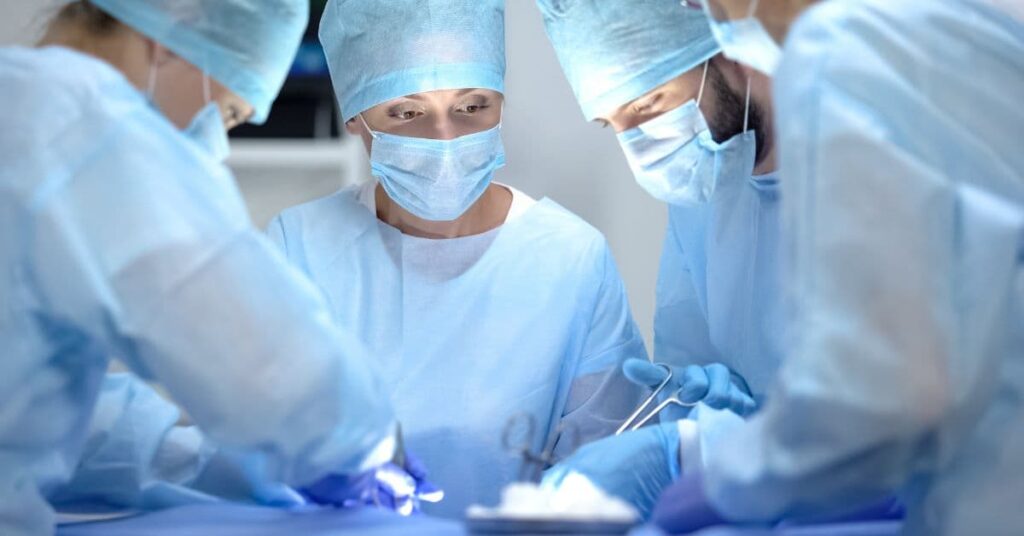Cardiothoracic surgery encompasses a wide range of procedures designed to treat diseases and conditions of the heart, lungs, and chest. This field of surgery is crucial for addressing life-threatening issues such as coronary artery disease, lung cancer, and congenital heart defects. Understanding the various procedures, their purposes, and the recovery process can help patients and their families navigate the complexities of cardiothoracic surgery.
What is Cardiothoracic Surgery?

Cardiothoracic surgery refers to surgical procedures performed on the organs within the thoracic cavity, primarily the heart and lungs. These procedures are often necessary to treat conditions that cannot be managed with medication or other non-invasive treatments. Cardiothoracic surgeons are highly trained specialists who work to improve the health and function of the heart and lungs, often dealing with complex and critical cases.
Common Cardiothoracic Procedures
1. Coronary Artery Bypass Grafting (CABG)
Purpose: CABG is performed to improve blood flow to the heart in patients with severe coronary artery disease.
Procedure: Surgeons take a healthy blood vessel from another part of the body and graft it onto the blocked coronary artery, creating a new path for blood to flow to the heart muscle.
Recovery: Recovery from CABG typically involves a hospital stay of about a week, followed by several weeks of rehabilitation. Patients are advised to gradually increase their physical activity and adhere to a heart-healthy lifestyle.
2. Heart Valve Repair or Replacement
Purpose: These procedures are necessary for patients with damaged or malfunctioning heart valves, which can lead to heart failure if left untreated.
Procedure: Depending on the condition, surgeons may repair the valve or replace it with a mechanical or biological valve.
Recovery: Recovery varies based on the type of surgery but generally includes a hospital stay, followed by a period of rest and gradual increase in physical activity. Regular follow-up appointments are essential to monitor heart function.
3. Lung Resection
Purpose: Lung resection is commonly performed to remove cancerous tumors from the lungs. It can also be used to treat other conditions like severe infections or chronic obstructive pulmonary disease (COPD).
Procedure: The surgery involves removing a portion of the lung (lobectomy), an entire lung (pneumonectomy), or a smaller section of lung tissue (wedge resection).
Recovery: Recovery depends on the extent of the surgery and the patient’s overall health. It often includes a hospital stay of several days and a period of limited activity at home. Pulmonary rehabilitation may be recommended.
4. Aortic Aneurysm Repair
Purpose: This procedure is performed to prevent aortic aneurysms from rupturing, which can be life-threatening.
Procedure: Surgeons repair the aneurysm by replacing the weakened section of the aorta with a synthetic graft.
Recovery: Recovery includes a hospital stay and a gradual return to normal activities. Long-term follow-up is necessary to monitor the graft and overall aortic health.
5. Congenital Heart Defect Repair
Purpose: These surgeries correct structural heart defects present at birth, which can range from simple to complex anomalies.
Procedure: Depending on the defect, procedures may involve closing holes in the heart, repairing or replacing valves, or reconstructing blood vessels.
Recovery: Recovery varies widely based on the type and complexity of the defect. It often involves a hospital stay, followed by specialized care and monitoring.
Benefits of Cardiothoracic Surgery

1. Improved Heart and Lung Function
Cardiothoracic surgery can significantly enhance the function of the heart and lungs, leading to better oxygenation, reduced symptoms, and improved overall health.
2. Enhanced Quality of Life
By addressing critical issues such as blocked arteries or lung tumors, these procedures can alleviate pain, improve breathing, and increase energy levels, thereby enhancing the patient’s quality of life.
3. Increased Longevity
Successful cardiothoracic surgeries can extend a patient’s lifespan by preventing life-threatening complications associated with heart and lung diseases.
4. Symptom Relief
Procedures like valve repair or lung resection can relieve symptoms such as chest pain, shortness of breath, and chronic cough, allowing patients to lead more active and comfortable lives.
Risks and Considerations
While cardiothoracic surgery can be life-saving, it is not without risks. Potential complications include:
- Infection: As with any surgery, there is a risk of infection, which can usually be managed with antibiotics.
- Bleeding: Excessive bleeding during or after surgery may require additional treatment or interventions.
- Heart or Lung Dysfunction: There is a risk of complications affecting the heart or lungs, especially in patients with pre-existing conditions.
- Recovery Challenges: The recovery process can be lengthy and challenging, requiring commitment to follow-up care and rehabilitation.
Patients should discuss these risks with their surgeons and understand the potential benefits and drawbacks before proceeding with surgery.
Preparing for Cardiothoracic Surgery
Preparation for cardiothoracic surgery involves several steps:
- Medical Evaluation: A thorough evaluation to assess the patient’s overall health and identify any risk factors.
- Pre-Surgical Testing: Tests such as blood work, imaging studies, and heart or lung function tests.
- Medication Adjustments: Adjustments to current medications, including stopping certain drugs before surgery.
- Lifestyle Changes: Patients may be advised to quit smoking, improve their diet, and engage in regular physical activity to enhance surgical outcomes.
Cardiothoracic surgery plays a vital role in treating severe heart and lung conditions, offering patients the chance to lead healthier, more fulfilling lives. By understanding the procedures, benefits, and risks, patients can make informed decisions about their treatment options. As medical technology continues to advance, cardiothoracic surgery will likely see even more innovations, further improving patient outcomes and quality of life.
